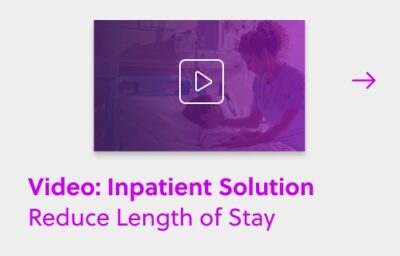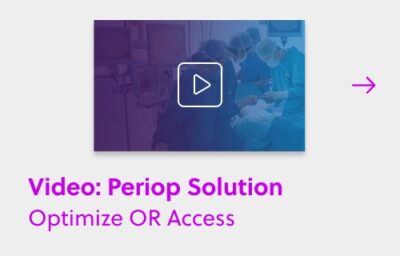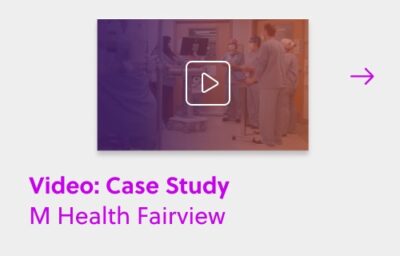
Written by Keri Barnett-Howell, Change Management Program Manager at Qventus
“Talk about the why,” is the ubiquitous phrase in lean seminars, industry talks, and process improvement departments. When changing how someone operates (so these lessons go) a person is a lot more likely to go along with your plan if they understand the reasoning behind it.
We put “talk about the why” on our project checklists, and then usually promptly forget about it as more pressing concerns appear. The “why” gets lost in technical concerns, important data needs, or discussions on which devices to purchase.
It’s so easy to skip the why! Why?
- We’ve thought about the “why” so much that the reasons behind the project seem obvious
- We’re so focused on getting the project up and running that the most attention is given to technical requirements and training
- Talking about the “why” is time consuming, and you don’t feel like you can take up people’s time with something more soft and nebulous
Unfortunately, when we skip this step, or don’t adequately map out what it looks like, projects get messy, fast. A recent deployment serves as a strong example of the consequences of forgetting the “why.” A large academic hospital was using our inpatient product, Pathfinder, to improve LOS, and this required a shift in how interdisciplinary rounding operated. The goal was to change the discussion from pure clinical requirements to well thought out discharge planning and preparation.
It soon became clear that the “why” had not been a strong part of the training. In the first set of rounds we observed the attending physician trying to get through rounding as quickly as possible. The case manager was dutifully typing patient information, but had no follow-up questions, did not suggest the physician change their process, and was operating solely as a notetaker.
In this example, the interdisciplinary rounds couldn’t move the needle on improving discharge planning and length of stay. To drive user engagement with the program and transform LOS with Pathfinder, we needed to help our hospital partner roll out a deeper training for users and make sure they understood the need behind what they were doing.
Hospital providers, like all people, get into habits, and those habits are incredibly hard to change. Unlike most people, however, providers have the weight of caring for sick people on their shoulders, and so their habits become deeply ingrained. Unless you give them a really good reason, you’ll be met with resistance — they simply have too much going on.
To avoid the pitfall of letting the why fall to the wayside, here’s a framework we’ve found effective when implementing a new system.
Map out your “why”
Don’t approach anyone with information about the project until you have your why ready. Sometimes called an elevator pitch, this is your two to five minute speech on why this project is important and why someone should pay attention.
It’s incredibly important to do this before you get into the details of the project. The “why” tends to get buried when project details, standard work, and timelines are mapped out. At the beginning of a project, the “why” should be physically written down, saved in a prominent location, and be the first thing talked about when approaching anyone new.
When we asked the case manager at the rounds what she had been told about Pathfinder before using it, she shrugged and responded, “The old case manager on the unit just told me to fill it out during rounds.” She had barely been trained and no one had told her why she was doing what she was doing. No one should be engaging with the product until they understand the reasoning behind it.
Take up people’s time
In hospitals there is an understandable reluctance to schedule more meetings than critically necessary. Providers need every second of the day to care for patients and complete their administrative load. However, in order to improve hospital operations, you have to get provider buy-in. In order to get buy-in, you have to take up some of their time explaining the why.
Providers may be initially annoyed, but just like anyone, they like being included and they like having their opinions matter. Present the “why” before the project officially begins and before providers are mandated to take action.
- Take the time you need. Practice your why spiel and test it on a small group of people to see roughly how many questions it will generate and how much time it takes. If you need an hour, schedule an hour, and make the time count.
- Flexibility is key. If you can’t get all the nurses on a unit into one meeting, schedule several meetings. Schedule them at times multiple shifts can attend. Make yourself hoarse repeating the same thing over and over. You will be sick of talking long before you’ve talked enough.
- Get to the point. Everyone hates sitting in meetings. Get straight to what the project is and how it affects the people in the meeting. If it affects different people in different ways, schedule separate meetings. It’s better for you to be repetitive (and learn more from each presentation) then to ask people to sit through irrelevant information.
At a midsize hospital in the Northwest, the ED director got us facetime with providers by scheduling our site visit during a monthly provider staff meeting. He planned early, put us on the agenda well in advance, and had time carved out for our presentation and questions. The providers were startled to find a change in their routine, but they were accessible, engaged, and, because they had already fit this meeting into their schedule, were unfazed by the amount of time needed.
If the project is worth doing, it’s worth taking a bite out of a provider’s schedule. If explaining the “why” and taking up their time doesn’t seem worthwhile, then the project itself may not be worthwhile.
Take up your own time
Everything listed above is hard! How can you possibly schedule and prepare for all of these meetings when you have a thousand other things on your To Do list? At a hospital, everything is a priority. There are a few ways to handle this:
- Delegate. Is there anyone else on your team who is good at communicating? Train other staff to do presentations and answer questions. This serves the dual purpose of freeing up your schedule and giving employees more responsibility and more experience.
- Duplicate. Can meetings serve two purposes? Are there staff meetings that you can be part of? Do all the providers take their lunch in a certain spot and you can chat informally with them? Always try to find creative ways to communicate with providers before assuming a new meeting needs to be scheduled.
- Change direction. If meetings are out of the question in the immediate term, written materials, signage, or videos can get people excited before the project begins. In-person meetings are not the only way to communicate information, so try to find an interesting alternative.
An east coast hospital working with Pathfinder wanted to roll it out quickly to multiple units, but they didn’t have the bandwidth in their leadership team. They had an extremely strong group of physicians, so they delegated communicating the project and leading it to the providers. This mass training and delegation allowed for a faster deployment, but it didn’t lose effectiveness because there were clearly defined and trained leaders running the show.
Butt in
At a different set of rounds testing Pathfinder, it was ignored and no notes were logged, meaning there was no significant change to the current rounds. Rounds stuttered on with some good questions being asked, but no documentation. Finally, a physician project leader got impatient enough, went over to the board herself, and started typing while informing the team what she was doing and why. Without her intervention, Pathfinder and the LOS project would never have gotten off the ground.
It’s hard to take this kind of initiative, especially if you aren’t a provider, but remember: you own this project. You know it best. And if it isn’t being done correctly, it’s your job to fix it. Get in the fray and show everyone how to do it right and why they should do it right.
The Point.
Another hospital implementing Pathfinder took the exact opposite tack. They scheduled several meetings with the main users where the inpatient tool was explained and users were given the opportunity to ask questions.
At each subsequent meeting, a few more people were added, meaning the more experienced users could explain things to their peers. Hospital leadership urgently wanted to install the product, but they didn’t see explaining the “why” as adversarial to quick ramp-up; rather, they saw it as an integral part of the process. Because of this more holistic approach, when the product did launch there were no questions, no pushback, and the entire process could run smoothly from the start.
All that to say: pay attention to the “why.” Understanding and communicating the “why” is an essential piece of any project. Empowering providers with the context behind a new system helps build advocacy, ensures coordination and can ultimately drive transformation on the frontlines.


